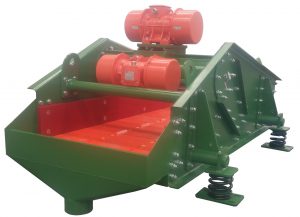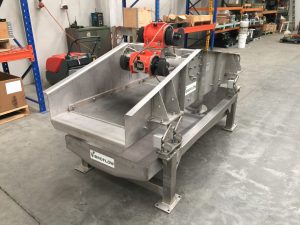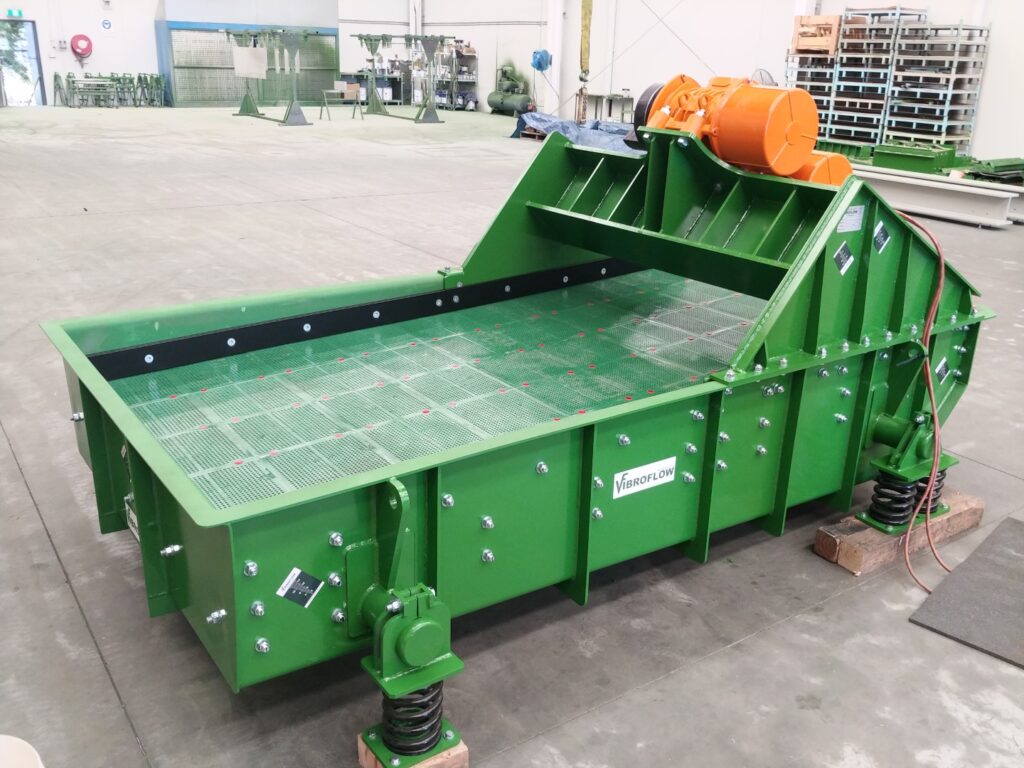
Dewatering screens provide a clean and cost effective way to remove liquid from product.
Wet material is fed across the surface of a dewatering screen. The water falls through the holes in the mesh while the product vibrates over the end. The end result is never 100% dry but a dewatering vibrating screen can transform slurry into grainy material.
Some common applications include:
- Removing water from ore and rock material.
- De-oiling or drying food.
- Cleaning processing chemicals from products.
- Eliminate moisture from waste matter.
To maximise the retention time, dewatering screens are usually installed at up to 5° degree incline. This also helps speed up water discharge from the product. Likewise, in cases where product is hard to convey, the unit can be installed at a decline and spray bars can be added with water discharge at the end.
Discharge sprouts can be flanged or simply square to round to allow piping for pumps.

Direct drive systems are used for dewatering with small strokes at high RPMs. Also, to break up large clumps, large strokes or ‘pulsing’ can be used.
Poly panels with 0.5mm apertures are the most common dewatering screening media. Wedge wire panels are used in applications where stainless steel is required. Some applications can be woven wire however as apertures get small there is risk of materials blocking. See screen media for more information.
Build materials for dewatering screens are either mild or stainless steel. As the process is wet, good painting systems are required on mild steel units. When the product is corrosive or acidic, stainless steel bodies are the better option.
Contact Vibroflow to discuss sizing and cost for dewatering screens for your application.

